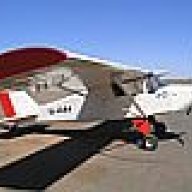-
Posts
336 -
Joined
-
Last visited
-
Days Won
2

bushcaddy105 replied to seb7701's topic in Instruments, Radios and Electronics

bushcaddy105 replied to GAFA's topic in AUS/NZ General Discussion

bushcaddy105 replied to slb's topic in AUS/NZ General Discussion

bushcaddy105 replied to cheray's topic in Instruments, Radios and Electronics

bushcaddy105 replied to Thruster87's topic in Aircraft General Discussion

bushcaddy105 replied to Admin's topic in Aircraft General Discussion

bushcaddy105 replied to Dafydd Llewellyn's topic in AUS/NZ General Discussion

